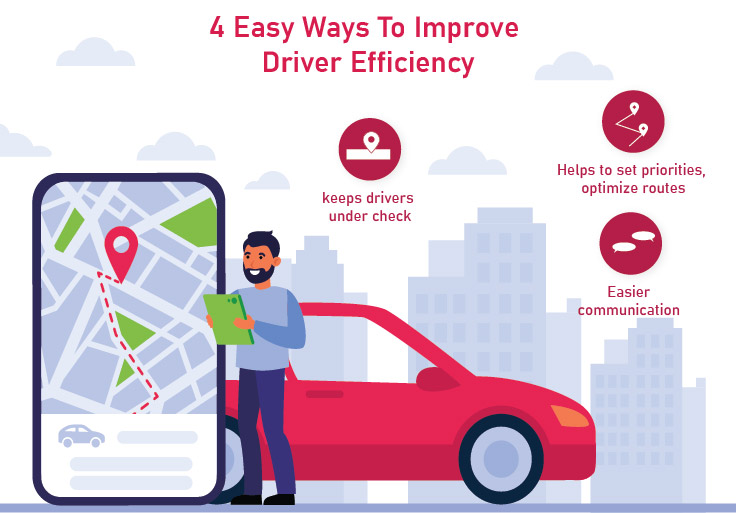Executive Summary
Change is constant and the World of Technology is, perhaps, the best proponent of this. A great example of this in recent years has been the advent of “Cloud Technology” and the increasing use of a centralized Unified Platform.
There are several benefits of such a unified system including reduced CapEx, benefits of a monthly subscription, flexibility of upgrades and downgrades, vastly improved data analytics, MIS, and, better decision-making to foster business growth and profitability.
Several industries including Logistics and Supply Chain Management, Online Marketing, CRM, Accounting and Finance, Vehicular Fleet Management, have rapidly adopted this system beneficially.
The Advent Of Unified Platforms and Cloud Technology
The World of Technology moves quickly, and recent years have heralded the advent of game-changers like “Cloud-Technology”.
Several traditional functions – like Accounting, Tax & Finance, Logistics, HR – have been swiftly migrated to cloud-based servers by using the modern “SaaS” (software-as-a-service) Model.
The SaaS model has numerous benefits for, both, client and customer:
- The monthly subscription model helps firms purchase only what they match need i.e buy what you need, upgrade or downgrade as you need.
- Big Data: with manifold more data available for analysis, this is the era of Big Data. Companies can now benefit from modern data analytics, ML (Machine Learning), and AI (Artificial Intelligence).
Other industries to have benefited from Unified Platforms and Cloud Technology include Online Marketing, CRM, and Fleet Management Software.
Given below are the top 7 ways firms benefit from such a centralized operation:
1. Centralized Data Management and MIS: a legacy-version “integrated” model results in numerous data-sources generating data across various unique platforms.
A centralized platform, however, uses a single source of data and one login. This improves safety, enables efficiency (report generation, usage, sharing data), streamlines usage (various levels of access based on needs), and gives company management holistic control over the entire range of operation.
Due to better MIS and data-analytics, company leadership achieves deeper insights and can make better business decisions.
2. Centralized, Cloud-based Server: perhaps, the most important benefit of having one centralized tool is that you receive, collect and analyze your data at a centralized, unified point. By eliminating the need to switch between multiple programs, multiple vendors, multiple servers and APIs, firms can vastly improve the effectiveness, safety and speed with which they operate.
This drives integration of all (most) functionalities thereby providing the user with a “single-source user experience” that is streamlined, defined and efficient.
3. Reduce Costs, Increase Revenue: using an integrated unified platform to manage your operations puts you on the path to optimizing costs as well as revenue (efficiency).
Cost: purchasing multiple subscriptions from various vendors that each has their individual charges prevents firms from negotiating best deals due to lack of (economies of) scale.
These funds are better saved and deployed in other areas of the business. The popular monthly pricing structure (Opex vs Capex) of a centralized platform is another leading benefit that modern cloud-technology has achieved.
Revenue: managing your operations from a centralized place that houses all your data enables greater levels of efficiency, deeper insight, and better communication and empowered decision-making. This enables company management to make better decisions to grow its topline.
Benefits of Unified Platform vs Integrated Model:
| Centralized Platform (Benefits) | Integrated Model (Limitations) |
| Single Cloud-Server. Therefore, applications, data, resources (etc.) are easily shared, freely communicated. | Multiple-Servers create complex communication patterns between systems. |
| Easy maintenance (service, upgrade, downgrade, security). | Disjointed, fragmented processes (applications, hardware, firewalls). |
| Single, one-source data. | Duplication of data. |
| Shared, common UI/UX. Presents a unified experience | Varied UI/UX between numerous interfaces. Needs more training, often creates confusion |
4. Scale: automation brings several benefits and “scale” is among the most important.
One of the biggest barriers to rapid business growth and scale is when a business has several disjointed processes that become even more difficult to integrate when the volume of business (the number of transactions, stakeholders, team members, data generated, geographies covered, the value of business conducted) increases.
If you have the good fortune of scaling particularly rapidly, well, you have an equal problem to match!
Therefore, whether a company is new, is growing rapidly – or, even if it is already a large firm with expansive operations – using a centralized, one-point platform will not only give you a holistic view of the entire operation but also enable you to stay on top of it.
5. Vendor Relationship: another advantage of a centralized platform is developing depth of relationship with your vendor.
This allows both, company and vendor, to understand the other’s capabilities comprehensively and work in tandem for mutual benefit. When you deal with multiple software, vendors, and platforms, it is less likely that you will achieve the same efficiency with them.
6. Security: The business cost of the “average” fraudulent data breach in 2020 was estimated to be nearly $4mn. With hackers becoming increasingly sophisticated, the high levels of security that a centralized platform offers is no longer a luxury but has become most essential.
7. Infrastructure: large unified cloud-based offerings essentially offer benefits via the modern “service-based-models” – in this case, as a “platform-as-a-service” model. This makes it much easier for firms to manage their servers, infrastructure, service and maintenance, upgrades, (etc).
By doing this, firms can eliminate the different hosting platforms that each vendor uses, eliminate complicated firewalls which create complex models and often result in snags.
Unified Platforms: Enabling Modern Tech-Tools like GPS-enabled Fleet Tracking Software:
An area where modern unified cloud-based platforms have created immense benefit for companies is in the field of Vehicular and Transportation Fleet Management.
These cloud-based, GPS-enabled fleet tracking systems are flexible enough to fit the requirements of all fleet sizes and can be customized for individual dynamics. Some benefits include:
- Plan vs Actual: record actual performance of your drivers and vehicles as against assigned metrics across trip details, compliance, safety, and violations.
- Notifications, Updates: communicate with your users (drivers) on the go via notifications and messages.
- Vehicle Performance: detailed data collection and analytics about fleet performance help in monitoring and maintenance of your vehicles for best performance and vehicle longevity.
- Driver Performance: track the driver behavior of all your drivers individually and as a group. Analyze driver logs for performance such as timeliness, safety adherence, speeding, fuel consumption (etc).
Conclusion:
While we are in something of a “transitory phase” – Cloud Technology, Emerging Tech, ML, AI – the benefits of a unified platform as against legacy, on-site systems are evident.
Business leaders must use this opportunity wisely to take better decisions, improve company processes and foster business growth.
Using a single unified platform helps in boosting the overall productivity of the business.




